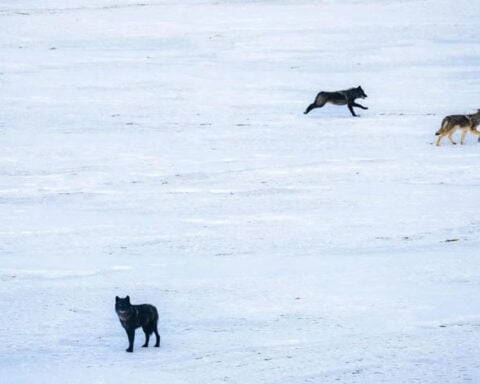By Will Dunham
WASHINGTON (Reuters) - In Earth's upper atmosphere, a fast-moving band of air called the jet stream blows with winds of more than 275 miles (442 km) per hour, but they are not the strongest in our solar system. The comparable high-altitude winds on Neptune reach about 1,200 miles (2,000 km) per hour. Those, however, are a mere breeze compared to the jet-stream winds on a planet called WASP-127b.
Astronomers have detected winds howling at about 20,500 miles (33,000 km) per hour on this large gaseous planet, located in our Milky Way galaxy approximately 520 light-years from Earth in a tight orbit around a star similar to our sun. A light-year is the distance light travels in a year, 5.9 trillion miles (9.5 trillion km).
The supersonic jet-stream winds circling WASP-127b at its equator are the fastest of their kind on any known planet.
"There is an extremely fast circumplanetary jet wind found on the planet. The velocity of the winds is surprisingly high," said astrophysicist Lisa Nortmann of the University of Göttingen in Germany, lead author of the study published on Tuesday in the journal Astronomy & Astrophysics.
More than 5,800 planets beyond our solar system - called exoplanets - have been discovered. WASP-127b is a type called a "hot Jupiter," a gas giant that orbits very close to its host star. WASP-127b's diameter is about 30% larger than Jupiter, our solar system's largest planet. But its mass is only about 16% that of Jupiter, making it one of the least dense - puffiest - planets ever observed.
"WASP-127b is a gas giant planet, which means that it has no rocky or solid surface beneath its atmospheric layers. Instead, below the observed atmosphere lies gas that becomes denser and more pressurized the deeper one goes into the planet," said astrophysicist and study co-author David Cont of Ludwig Maximilian University of Munich in Germany.
It orbits its star every roughly four days at just about 5% of the distance between Earth and the sun, leaving it scorched by stellar radiation. Like our moon is to Earth, one side of WASP-127b perpetually faces its star - the day side. The other side always faces away - the night side. Its atmosphere is about 2,060 degrees Fahrenheit (1,400 degrees Kelvin/1,127 degrees Celsius), with its polar regions less hot than the rest.
Like Jupiter, WASP-127b is composed mainly of hydrogen and helium, but its atmosphere also contains traces of more complex molecules such as carbon monoxide and water, which were identified in this research.
The fact that a hot Jupiter's day side is highly irradiated is believed to be a major driver of atmospheric dynamics.
"Answering the question of what drives these intense winds is challenging, as several factors influence wind patterns in exoplanet atmospheres," Cont said.
"The primary source of energy for these winds is the intense irradiation from the host star," Cont added, but other factors also play an important role in shaping the wind patterns.
Higher atmospheric wind speeds have been detected on two other exoplanets, in winds from their day side to night side, but not in winds flowing around the entire planet.
The researchers tracked the speed of molecules in the planet's atmosphere using an instrument called CRIRES+ on the European Southern Observatory's Chile-based Very Large Telescope. They made the observations using the "transit" method, observing changes in the host star's brightness when the planet passes in front of it, from the perspective of a viewer on Earth.
With improvements in instrumentation, observational techniques and data analysis, researchers are better able to understand exoplanets' atmospheres.
"We are moving beyond inferring average properties, such as global average temperature or chemical abundances, to exploring the three-dimensional aspects of these atmospheres - for instance studying winds, temperature variations and chemical processes across different longitudes and latitudes. These results show how much remains to be discovered and how each new observation surprises this rapidly evolving field," Cont said.
(Reporting by Will Dunham, Editing by Rosalba O'Brien)

 Trump has begun another trade war. Here's a timeline of how we got here
Trump has begun another trade war. Here's a timeline of how we got here
 Canada's leader laments lost friendship with US in town that sheltered stranded Americans after 9/11
Canada's leader laments lost friendship with US in town that sheltered stranded Americans after 9/11
 Chinese EV giant BYD's fourth-quarter profit leaps 73%
Chinese EV giant BYD's fourth-quarter profit leaps 73%
 You're an American in another land? Prepare to talk about the why and how of Trump 2.0
You're an American in another land? Prepare to talk about the why and how of Trump 2.0
 Chalk talk: Star power, top teams and No. 5 seeds headline the women's March Madness Sweet 16
Chalk talk: Star power, top teams and No. 5 seeds headline the women's March Madness Sweet 16
 Purdue returns to Sweet 16 with 76-62 win over McNeese in March Madness
Purdue returns to Sweet 16 with 76-62 win over McNeese in March Madness







